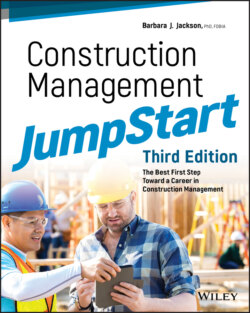Читать книгу Construction Management JumpStart - Barbara J. Jackson - Страница 131
progressive design-build
ОглавлениеA qualifications-based design-build application where the design-builder is selected primarily on qualifications, followed by a process whereby the owner then progresses toward a design and contract price with the delivery team.
But what is a design-build entity, anyway? Where are the architect and the contractor in all of this? Actually, they're still two of the primary players, but how they organize themselves to do business is what differs. The design-build entity can be configured in three basic ways:
Contractor and designer partnership In this scenario, two firms simply decide to work together on a single project with one of them at risk for the project. A construction firm and a design firm join forces to go after a project. One of the two partners takes the lead and actually enters into a contract with the owner to provide both the design and construction services. For example, under the contractor-led design-build model, the architect is hired by the builder (not by the owner as in design-bid-build), and the builder actually holds the contract to deliver both design and construction. If it is a designer-led design-build model, the opposite is true. The architect or engineer hires a contractor and is obligated for both the design and the construction. The partnership created is simply an agreement to work together. There is no new legal entity created under this setup. The second party is a subcontractor to the first but has no direct contract with or obligation to the owner. Contractor-led design-build is the most prevalent form practiced today.NOTEApproximately 54 percent of all design-build projects are led by contractors. Construction managers who have a desire to participate on design-build projects should be knowledgeable regarding the design process and enjoy working with architects in a team environment.
Full-service design-build firm This is probably my personal favorite when it comes to design-build, of which I am a big fan. In this model, the design professionals and the construction professionals work for the same firm under the same roof. This situation permits no excuses for not communicating! One can just walk down the hall when a question or problem arises. You can imagine how efficient this process can be compared to the phone tag and email lag problems that are common when team members try to communicate from a distance. Additionally, there commonly exists a higher level of trust among the various disciplines working under the same roof than what you would find under the other models. This, of course, adds to the efficiency.
Joint venture The joint venture configuration is similar to the designer and contractor partnership with one exception: the design firm and the construction firm actually create a legal entity, the joint venture, for the purpose of carrying out the design and construction of a specific project. Under this arrangement, both parties are at financial risk for delivering the project.
